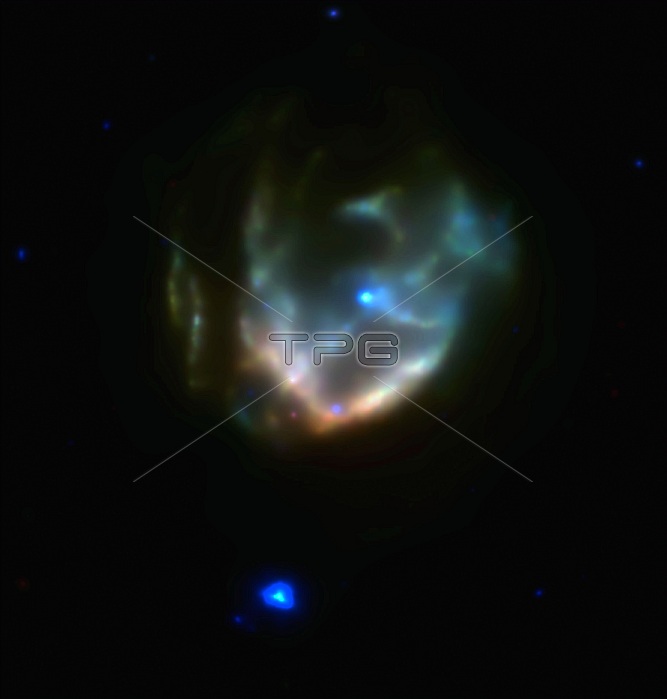
Massive stars end their life as supernovas, releasing massive amounts of energy and matter. What remains of the star is a small and extremely dense remnant: a neutron star or a black hole. The green and pink bubble dominating this image is Kesteven 79, the remnant of a supernova explosion located about 23,000 light-years away from Earth. The explosion left behind a a young neutron star with a weak magnetic field, which can be seen as the blue spot at the centre of Kesteven 79. The blue object at the bottom of the image is a neutron star with an extremely strong magnetic field, known as a magnetar. Astronomers discovered this magnetar, named 3XMM J185246.6+003317, in 2013. While the neutron star in the supernova remnant is relatively young, the magnetar is likely a million years old; the age difference means that it is very unlikely that the magnetar arose from the explosion that created Kesteven 79, but must have formed much earlier. This false-color image is a composite of 15 observations performed between 2004 and 2009 with the EPIC MOS camera on board European Space Agency's XMM-Newton X-ray telescope. The image combines data collected at energies from 0.3 to 1.2 keV (shown in red), 1.2 to 2 keV (shown in green) and 2 to 7 keV (shown in blue).
| px | px | dpi | = | cm | x | cm | = | MB |
Details
Creative#:
TOP22315130
Source:
達志影像
Authorization Type:
RM
Release Information:
須由TPG 完整授權
Model Release:
N/A
Property Release:
No
Right to Privacy:
No
Same folder images:

 Loading
Loading